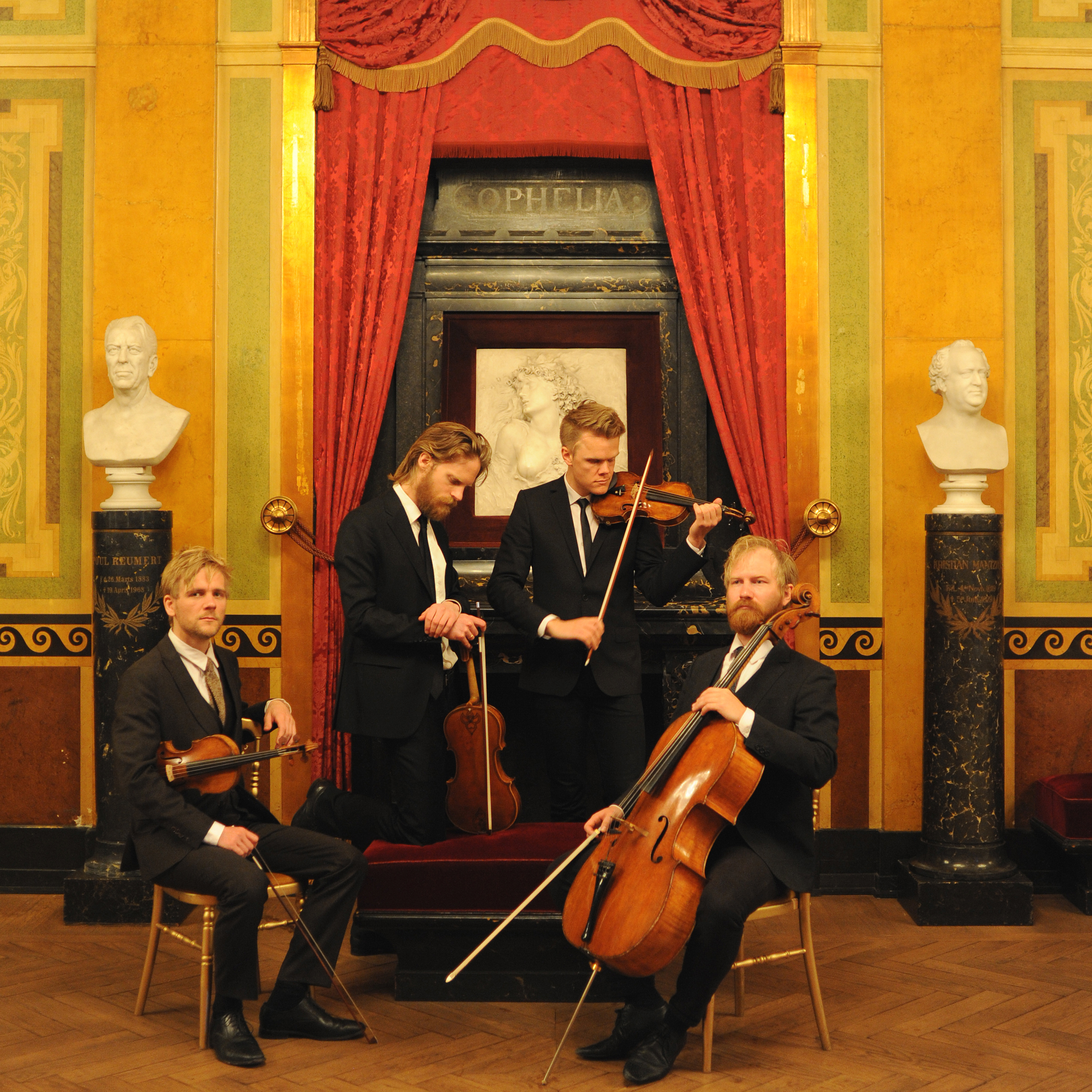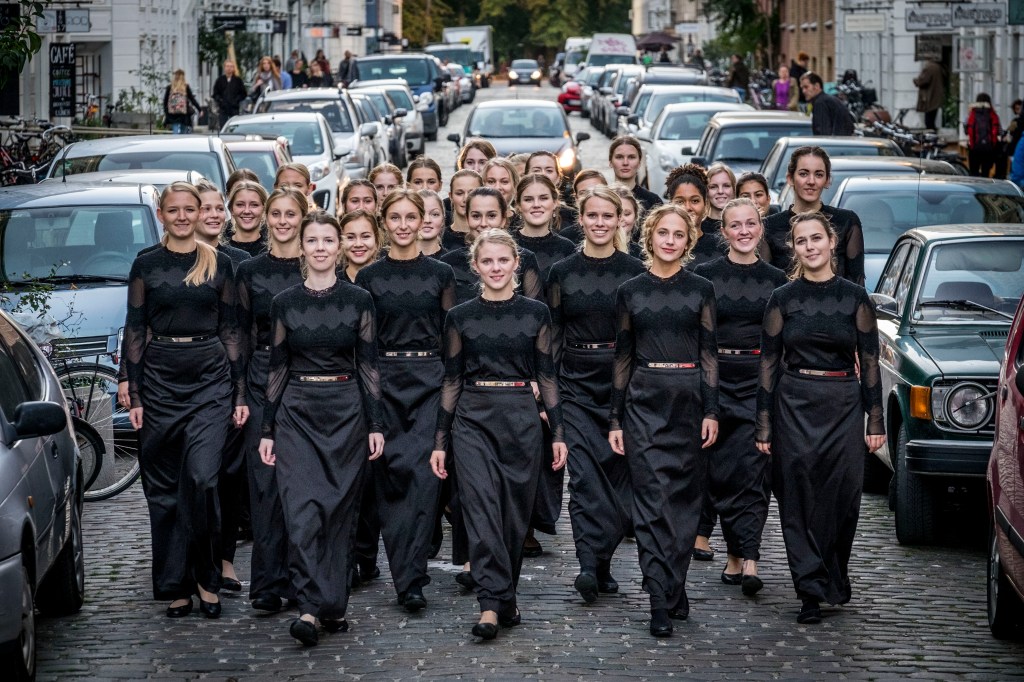A Broad Sphere of Light
Danish String Quartet with the Danish National Girls’ Choir

At a moment when it seems as though the musical world is flush with extraordinary string quartets, the Danish String Quartet still manages to stand out. After achieving worldwide crossover success with the chart-topping Last Leaf, an album of Danish folk music they released in 2017, it would be understandable if this group of hip and handsome thirtysomethings rested on their musical laurels and coasted through a career playing their own music to sold-out crowds, but that’s not what they are about. Instead, they launched into an ultra-rigorous recorded exploration of Beethoven’s late string quartets on the venerable ECM label. The results have blown away the critical community, particularly the most recent disk, Prism II, which contains their interpretation of the most famous Beethoven quartet of all, the No. 13 Op. 130/133, complete with its notorious Grosse Fuge.
Thanks to UCSB Arts & Lectures, we have had multiple opportunities to witness the growth and range of this organization, but what’s coming this time around makes even last season’s intense two-night stand look like a casual affair. On Tuesday, November 12, the four gentlemen will be joined on the Granada Theatre stage by the Danish National Girls’ Choir. Fifty young women strong, and armed with its own highly sophisticated repertoire, this powerhouse of a choir has been around in one form or another since 1938, thanks to the patronage of the Danish National Radio. Hot off a brilliant collaboration with American composer David Lang, the girls are only performing this unique collaboration one time in the United States, and it is happening right here. The next night, Wednesday, November 13, the DSQ returns to Campbell Hall for a recital that will include Beethoven’s final string quartet, the Op. 132.

The Independent exchanged emails with DSQ’s violist, Asbjørn Nørgaard, who had this to say about the events.
How did you begin working with the choir? A couple of years ago, we were invited to perform with the Danish National Girls’ Choir for their traditional summer concert. We didn’t know exactly what to expect. I think our idea of a girls’ choir was quite traditional: polite girls with good posture, singing beautifully. But what we saw at that concert was quite different. They presented an ambitious and very exciting concert and really showed us what a choir can be.
Last year, we were Ensemble in Residence at the Danish Radio, and we used the opportunity to create a concert together with the Danish National Girls’ Choir that almost worked as a pilot for the concert we will present in Santa Barbara.
The combination of a string quartet with a 50-person choir is not common. How did you develop the program? The program was developed as a continuation of a concert we did together in Copenhagen in 2018. The program moves from one single dark point into a broad sphere of light. All of it will be played in one musical flow where the transitions are worked out harmonically. There is maybe not a grand intellectual theme that unifies everything, but we want to show that beauty and the beast can and should live side by side. If you put a string quartet on a stage, the default sound is quite beautiful. Then add 50 singing girls, and it is like putting sugar on an ice cream. So we have worked a lot to present a program that shows some darker sides. A girls’ choir can sound like angels, but they can also be as scary as the twins in Kubrick’s The Shining.
What about the late Beethoven string quartets strikes you as most interesting now that you are further along with the Prism project? Beethoven is often put up on a very high pedestal. He is worshiped like a god, and his pieces are treated as Moses’ Ten Commandments. But the more we work on this music, the more it feels obvious to us that this is not big, “institutional” music; this is not perfect music. The great, late Beethoven string quartets are long in duration and have their “crazy” moments, but they are special because they are small, imperfect and human.
What else would you like people to know about this season for the group? 2020 is a big Beethoven worldwide celebration. We will do our part with a couple of regular cycles in addition to presenting our Prism programs. It is lots of fun, and for a string quartet it can’t get better than this: It is a year of musical Mount Everests. But as dads of an ever-growing horde of babies and toddlers, we know that real life can entail other types of mountains that we also need to deal with while working on our Beethoven. Maybe that is why we keep returning to the human nature of his music this year? —Charles Donelan
4•1•1 | UCSB Arts & Lectures presents the Danish String Quartet with the Danish National Girls’ Choir on Tuesday, November 12, 7 p.m., at The Granada Theatre (1214 State St.), and the Danish String Quartet Wednesday, November 13, 7 p.m., at UCSB’s Campbell Hall. See artsandlectures.ucsb.edu or call 893-3535.




You must be logged in to post a comment.